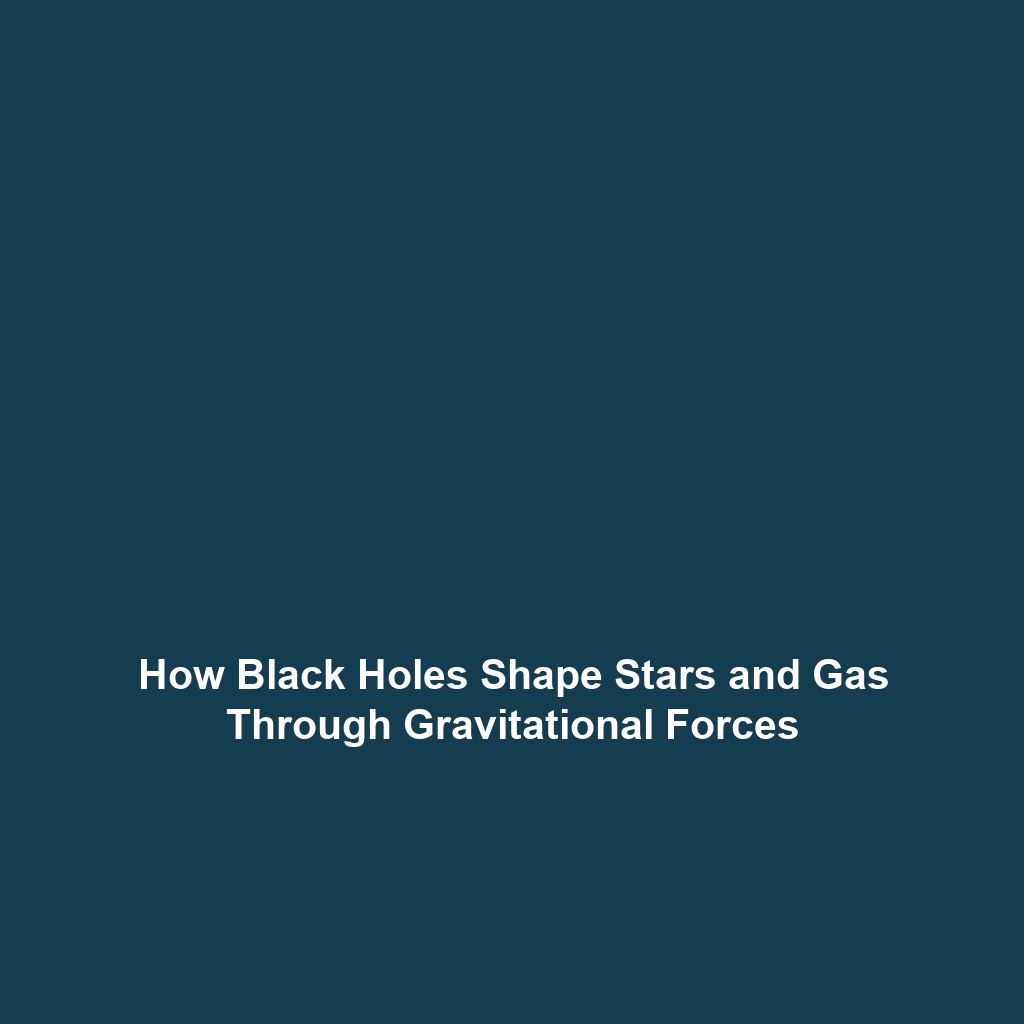Gravitational Effects on Nearby Stars and Gas: Insights into Black Holes
Introduction
The gravitational effects exerted by black holes on nearby stars and gas represent a significant area of study in astrophysics. Understanding these gravitational interactions is crucial not only for comprehension of black holes themselves but also for their influence on star formation and the dynamics of galaxies. As we delve into this topic, keywords such as “gravitational effects,” “black holes,” “nearby stars,” and “gas dynamics” are essential to understanding the profound implications of these cosmic phenomena.
Key Concepts
Understanding Gravitational Effects
Black holes possess strong gravitational fields, which can significantly affect the motion of nearby stars and gas. Notable concepts include:
- Accretion Disks: These are formed when gas falls towards a black hole, leading to increased temperature and radiation.
- Orbital Dynamics: The trajectories of stars can be altered significantly due to the gravitational pull of a black hole, influencing the overall structure of galaxies.
- Gravitational Lensing: This phenomenon occurs when the massive gravity of a black hole bends the light from objects behind it, providing a means of studying unseen cosmic entities.
Applications and Real-World Uses
The gravitational effects on nearby stars and gas have various applications in astrophysics:
- Understanding Galaxy Formation: By studying how black holes influence surrounding stars and gas, astronomers can gain insights into the formation and evolution of galaxies.
- Measurement of Black Hole Mass: Analyzing the motion of stars near black holes allows scientists to estimate their masses and understand their role in the universe.
These applications illustrate how gravitational effects on nearby stars and gas are pivotal in advancing our knowledge of black holes.
Current Challenges
Despite significant progress, several challenges persist in studying gravitational effects related to black holes:
- Detection Limitations: Observing the effects on distant stars can be difficult due to limitations in current astronomical technology.
- Complex Simulations: Accurately simulating the complex gravitational dynamics requires advanced computational models, which can be resource-intensive.
- Data Interpretation: Differentiating between the gravitational influence of black holes and that of other celestial bodies remains challenging for astronomers.
Future Research and Innovations
Future research efforts are poised to yield innovations in understanding gravitational effects associated with black holes:
- Next-Generation Telescopes: Upcoming technologies such as the James Webb Space Telescope aim to provide deeper insights into gravitational interactions at greater distances.
- AI in Astronomy: Artificial intelligence is being adopted to analyze vast datasets more efficiently, potentially identifying patterns related to gravitational effects.
- Quantum Technologies: Research in quantum physics may offer new frameworks for understanding the fundamental nature of gravity around black holes.
Conclusion
Understanding the gravitational effects on nearby stars and gas is essential for advancing our knowledge of black holes and their role in the universe. From their complex influence on stellar dynamics to their applications in measuring black hole masses, these interactions offer profound insights into cosmic structures. Continued research in this area promises to unveil further discoveries that could reshape our understanding of astrophysics. For more detailed insights, explore our sections on galaxy formation and measuring black hole mass.







